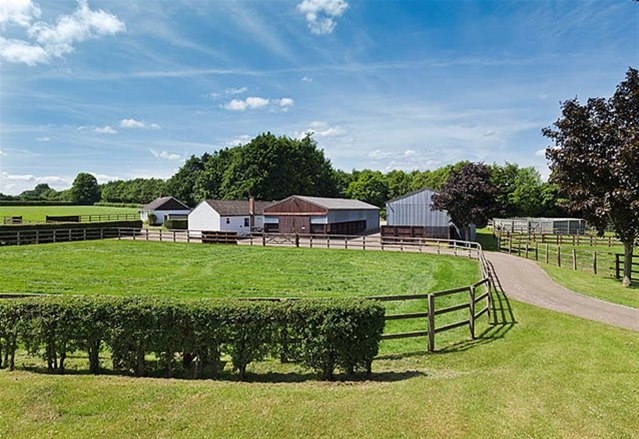Posted: 19th February 2019 | Back to news feed

Horses are roaming animals and need open spaces to graze. However, this needs to be balanced against the horse owner’s obvious concerns about their equine friends wandering too far. This is particularly important with the risks posed by modern roads, so keeping your horses contained in a safe but adequate space is a high priority.
This makes secure, effective fencing around pastures, paddocks, yards and fields very important to horse owners. There are two key requirements – fencing must be strong and secure enough to keep horses in a specified area, but safe enough not to pose a risk or injury should, as horses do, they decide to push against it to have a good scratch – or lean through it to reach the juicier-looking grass on the other side.
Here, professional landscaping supplies specialist Suregreen outlines the key considerations for building fencing that is safe for your equine stock.

Fence height
To be truly safe for your horses, fencing should aim to be high enough to discourage them from leaning over to reach the other side. The pressure would create on the horse’s neck as they press across the top of the fence poses a serious risk of injury, especially if the animal overbalances.
Heights of five feet for medium sized horses and up to six feet for taller breeds are recommended. However, enclosing large areas with fencing of this size creates practical issues, demanding large amounts of material and therefore incurring higher costs. Ultimately, it is about finding the right balance without compromising the safety of your animals.
Materials - the post-to-cost ratio
Various different materials can be used to build equine fencing, all with their own advantages and disadvantages and all with their different costs. For example, thermo-plastic resin fences are strong, durable, long-lasting and require minimal maintenance, but they are very expensive. At the opposite end of the scale, barbed wire is cheap and relatively easy to put up, but poses an unnecessary injury risk to your animals.
One of the best ways to balance cost versus effectiveness is to first gauge the number of fencing posts that you will require to achieve a completely secure, safe enclosure. For example, with timber panelled fencing, a high number of posts per any given distance are required to maintain strength, which raises the costs. But with high-tensile wire or mesh, the strength is achieved by pulling the material taut, reducing the number of posts required and therefore making it much more cost-effective.

Visibility
Finally, ensuring all fencing is clearly visible to horses is another high safety priority. The worst accidents involving fences occur when horses simply do not see a fence and ride them down, hitting them at high speed and, in the case of wire fences, potentially getting tangled up in them.
Visibility is particularly an issue if fences stop below the horse’s eyeline, so it is good practice with mesh and wire fences in particular to install a top rail that will help make it more obvious to the horse – even if it is below its normal line of sight. Some materials such as such as PVC-coated wire, or timber, are made in light and bright colours with visibility in mind.
Overall, building appropriate fencing for your equine enclosures is a matter of balancing practicality and cost with you’re the safety of your animals. Surrounding large fields with panelled fencing made out of the toughest thermo-plastic resins takes a huge amount of work and costs a lot of money. With high tensile wire mesh, this should not be necessary to enclose large areas, so long as steps are taken to make the wire fencing visible to the horses and it is installed with the appropriate number of posts to withstand the occasional collision.
For more information visit: www.sure-green.com
The Equestrian Index newsfeed is compiled from articles submitted by advertising members and expresses the opinions of those members. Watsons Directories Ltd shall not be held liable for any inaccuracies or mis-statements therein.